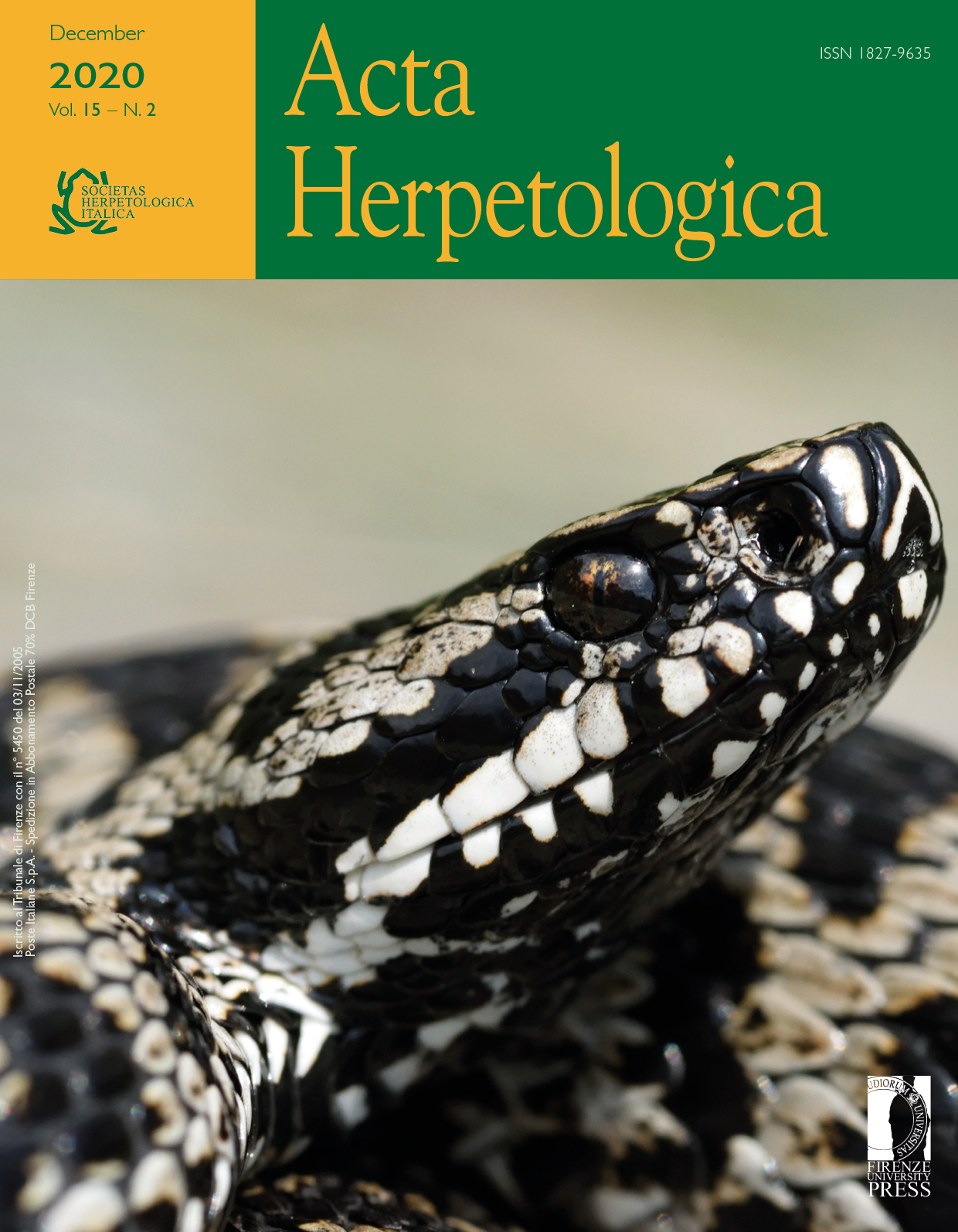First karyological analysis of the endemic Malagasy phantom gecko Matoatoa brevipes (Squamata: Gekkonidae)
Published 2020-12-08
Keywords
- Chromosomes,
- leaf-toed geckos,
- Matoatoa,
- Madagascar,
- evolution
- reptiles ...More
How to Cite
Funding data
-
H2020 Marie Skłodowska-Curie Actions
Grant numbers 797027
Abstract
The genus Matoatoa includes two Malagasy endemic species, M. brevipes and M. spannringi. Due to their cryptic behaviour, the two species are known only from a handful of specimens and have been included in few molecular studies. Here we carried out a molecular barcoding analysis using a fragment of the mitochondrial NADH dehydrogenase subunit 2 (ND2) and the first chromosomal analysis of M. brevipes. The molecular analysis confirmed the identity of the studied samples as M. brevipes. However, the level of genetic divergence (4% uncorrected p-distance) between our samples and other sequences of M. brevipes, suggests previously unrecognised diversity within the species. The karyotype of M. brevipes is composed of 2n = 34 chromosomes: the first pair is metacentric, while all the other pairs are telocentric and gradually decreasing in length (Arm Number, AN = 36). C-banding revealed little evidence of centromeric heterochromatin, while NOR-associated heterochromatin was found on the telomeres of a medium sized telocentric pair. No heteromorphic chromosome pairs were found in the karyotype of the species, suggesting that putative sex chromosomes are at an early stage of differentiation. Karyological comparisons with closely related species were performed with Christinus marmoratus, and representatives of the genera Phelsuma, Ebenavia, Paroedura and Uroplatus. Comparisons across genera suggest that chromosome diversification in this group of geckos probably occurred by means of chromosome fusions and inversions, leading to a reduction of the chromosome number and the formation of biarmed elements in different species.






